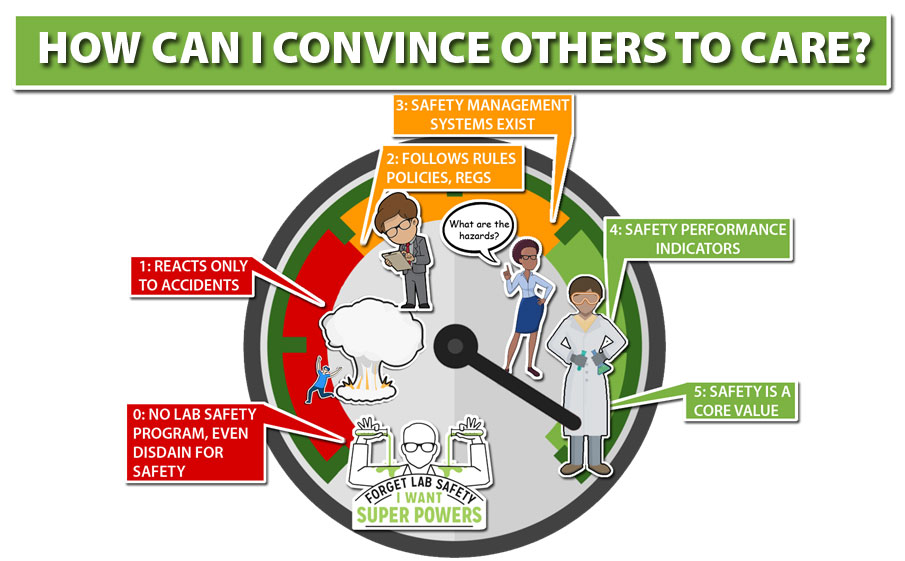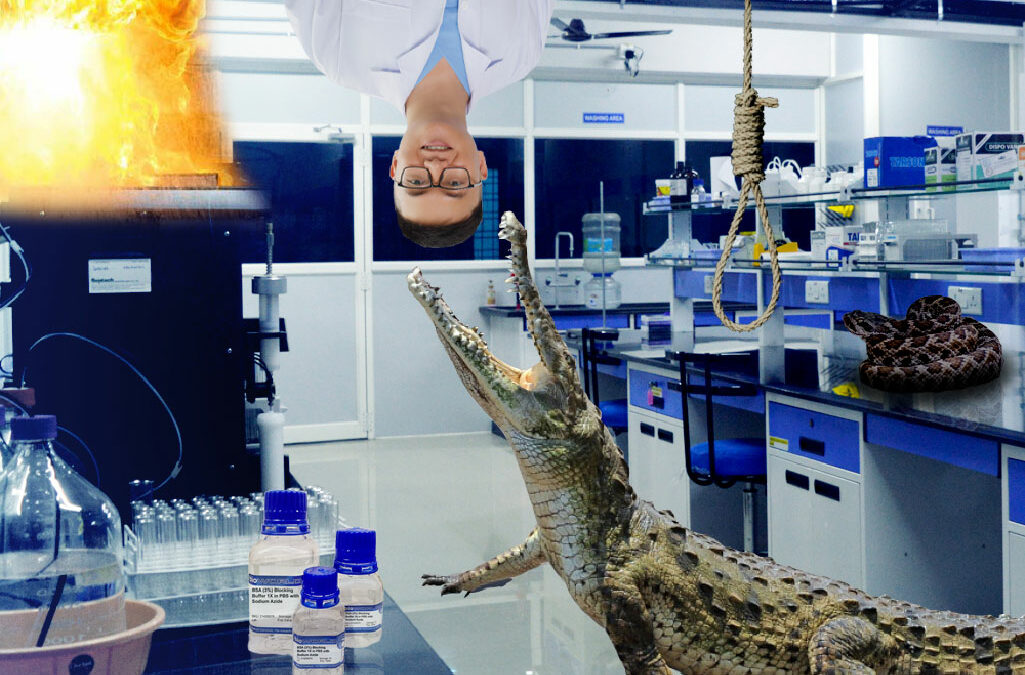In his 2003 biography, billionaire investor Charlie Munger revealed his favorite hack for finding out-of-the-box solutions: “Turn a situation or problem upside-down. Look at it backward,” he said. “Where don’t we want to go, and how do you get there?”
Applying Munger’s inverted thinking model to lab safety produces an interesting question: How can we make our laboratory as unsafe as possible?
Of course, prohibiting protective equipment and encouraging new employees to mix unknown substances over an open flame is a good start, but we can do better than that. To really crank the danger meter into the red zone, we need a culture of danger — a lab in which people couldn’t care less about anyone’s limbs or lives. Wondering if peroxides have formed in that bottle? Slam it on the bench and find out. Researching a new bloodborne pathogen? Inject it into your nearest colleague and observe the effects.
Following this backwards thinking all the way back, we uncover a grim truth: fundamentally, what may lie at the core of a safety program is how much the people in that lab value life. This brings up a very big question:
HOW MUCH IS A LIFE WORTH?
The question is a thicket full of complex ethical challenges. Some would say life is so immeasurably valuable that the very question is offensive. On the other hand, some economists contend that by the choices we make (such as accepting hazard pay for certain occupational risks), we unconsciously put a price on our own heads.
The Department of Transportation, the Centers for Disease Control and the Environmental Protection Agency all use an index called the value of a statistical life (VSL) in preparing government reports that shape public policy. Although proponents insist there’s a difference between using a statistical index and placing an actual price tag on human life, the VSL clearly has impacts in the real world.
For example, in 1974 the Department of Transportation rejected a regulation to install bars at the rear of semi trailers to prevent passenger vehicles from sliding underneath them in a collision. The reasoning? The cost of installing the bars (almost $2 billion in today’s dollars) exceeded the value of the lives it would have saved per year, based on a $1 million per life (the value the department was using at the time). The bars became mandatory in 1998 after the department’s VSL had increased to $2.5 million.
Whether officials are looking at speed limits, mine safety rules or pandemic shutdowns, the VSL influences whether a government agency decides the deaths avoided by a particular policy are worth the cost — or not.
Such arbitrary valuation of human life may seem distasteful, especially when the government does it, but we have to admit the decisions we make every day reflect our own view of the value of life. Every time we don’t wear a seat belt for a moment, stand on a chair to change a light bulb, or do other things we know are unsafe, we are effectively making a decision that the risk is “worth it” — an expression that implies value.
YOUR LAB SAFETY PROGRAM
In a lab, the value assigned to life, even unconsciously, can influence individual willingness to take risks, and that can affect policies, attitudes, and organizational safety culture. On the low end of the spectrum, there is no safety program — even an outspoken disdain for safety. Safety may be seen as a waste of time, or as an impediment to productivity.
Further along the spectrum, some organizations’ safety culture focuses almost exclusively on the strict observance of rules and regulations. Employees may dutifully perform the required hazard analyses, but little more. While this is better than nothing, it does not meaningfully reflect a high value being placed on human life.
On the high end of the spectrum, there is an evident and active concern over the lives of everyone in the lab. If a serious safety violation occurs, the entire operation is immediately shuttered until the safety issues have been identified and corrected. Safety is a core value that permeates all aspects of employees’ lives, including in the car and at home.

Whether human life is considered immeasurably valuable, or appraised at a mere $11.3 million (the Environmental Protection Agency’s current mean VSL), considering each human life as essential and irreplaceable will necessarily affect the actions we take in the lab.
Think of it this way: a $100 piece of artwork may get thrown in the trunk with the groceries, but a $10 million piece of art would be stored in a climate-controlled container and transported with the greatest care. If human beings are worth at least that much, they should be treated accordingly.
Truly embracing safety at this level results in a culture in which each employee feels personally valued and protected. When each person clearly understands that coming home safely each night is immensely more important than the job itself, this has far-ranging effects on productivity, satisfaction and retention.

